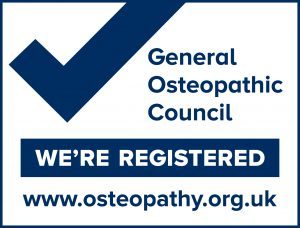My daughters Lisa and Jennifer have both suffered with headaches and stress related issues, without Richard’s expertise in osteopathy and his ability to treat their backs, necks and heads, thus giving them the release from their reoccurring headaches and pain, their lives would be far from normal.
The Case Against Sitting for long periods.
I thought the following article is from medscape was relevant as everyone returns to work in 2018;
Sitting and back pain
If anyone should know about the danger of being sedentary, it’s Bethany Barone Gibbs, PhD. A professor of health and physical activity at the University of Pittsburgh, Pennsylvania, she was writing grant proposals to study just that topic when her back began to hurt.
“I’m 30 years old,” she thought to herself. “How do I already have back pain?”
It didn’t seem to be a matter of getting more exercise. Dr Gibbs takes spinning classes twice a week; runs after her two kids, now aged 5 and 8 years; and traverses campus on foot rather than sending emails to her colleagues.
All that activity, she eventually realized, couldn’t compensate for the time she had to spend sitting still to write about the problem of sitting still. Fortunately, that same research provided the solution. After looking at the data on sit/stand desks, she got one for herself. Soon, the back pain ended.
In a pilot study, Dr Gibbs has now shown that she is not alone. Alternating positions between sitting and standing can go a long way toward alleviating back pain.
Most of the research into the problems of sitting has focused on damage to circulation and metabolism. Perhaps the most striking finding is that too much time sitting can increase the risk for death, even among people who meet standard exercise recommendations. To overcome the effects of sitting 8 hours a day, you’d have to exercise at least 1 hour, according to the authors of a 2016 meta-analysis.
This discovery has sparked interest in desks that allow the user to stand or even walk in place while working. Studies have shown that people burn more calories when standing than sitting at their desks and suggested that some people could lose weight that way or improve cholesterol levels.
Counterintuitive Findings
Of course, there’s a reason that people usually sit at desks. When researchers began looking at the benefits of standing at a desk, they immediately worried about muscle and skeletal pain. Previous research had shown that workers who spend more than one half their time standing up are more likely to experience this sort of discomfort.As a result, many of the early studies considered musculoskeletal pain as a possible side effect of standing at a desk. Whereas some studies found a slight increase in pain, most found no effect or a slight benefit.
Why might standing hurt less than sitting? Both postures can exert compressive forces on the intervertebral discs. But in a sitting position, the lumbar muscles are minimally activated, shifting their burden to passive structures, such as ligaments and discs. In addition, says Dr Gibbs, while sitting long-term, hip flexors may shorten. Standing up after a long period of sitting puts stress on these muscles, forcing the low back compensates for their lack of flexibility. About 60% of office workers experience back pain, and prolonged sitting is thought to be a major reason.
A recent meta-analysis of studies on standing desks found that offering employees sit/stand desks reduced their back pain by 0.30-0.50 on a scale of 0-10 points, where 0 is no pain and 10 is the worst pain imaginable. That may not sound like much, but in some studies, that meant a reduction in pain of about 50%.
For example, researchers at Stanford University, in Palo Alto, California, randomly divided 46 university employees into two groups. One group received work stations that could be adjusted to either a sitting or standing position and had access to them for 12 weeks. The others got nothing but a promise of such work stations at the end of the trial.
After 12 weeks, the people who got the sit-work desks reported a 55% improvement in back pain on their worst days, compared with a 15% change for the control group, a statistically significant difference. And importantly for employers, those who got the sit/stand desks reported a 60% improvement in their ability to concentrate, compared with 34% for the control group.
But few, if any, researchers believe that office workers would benefit simply by standing instead of sitting. One problem is that blood flowing to the legs while standing has more trouble returning to the heart. This pooling effect can result in clotting and varicose veins, says Jamie Burr, PhD, an assistant professor of human health and nutritional science at the University of Guelph in Canada. “Standing at your desk for hours and hours is probably not the answer.”
Richard Katesmark comments ; “Seems to be more research just confirming what we already know anecdotally; ie Staying mobile at work with frequent changes of position reduces the likelihood of musculoskeletal ( and other medical ) problems .
It’s worth noting that some research shows compression through the lower lumbar discs on sitting is 3x that on standing. However it is also worth pointing out that certain spinal problems may be aggravated by long periods of standing . Hence my advice to try & have a mixture of both, ideally with some walking on & off throughout the day . ”
Happy New year to all.

